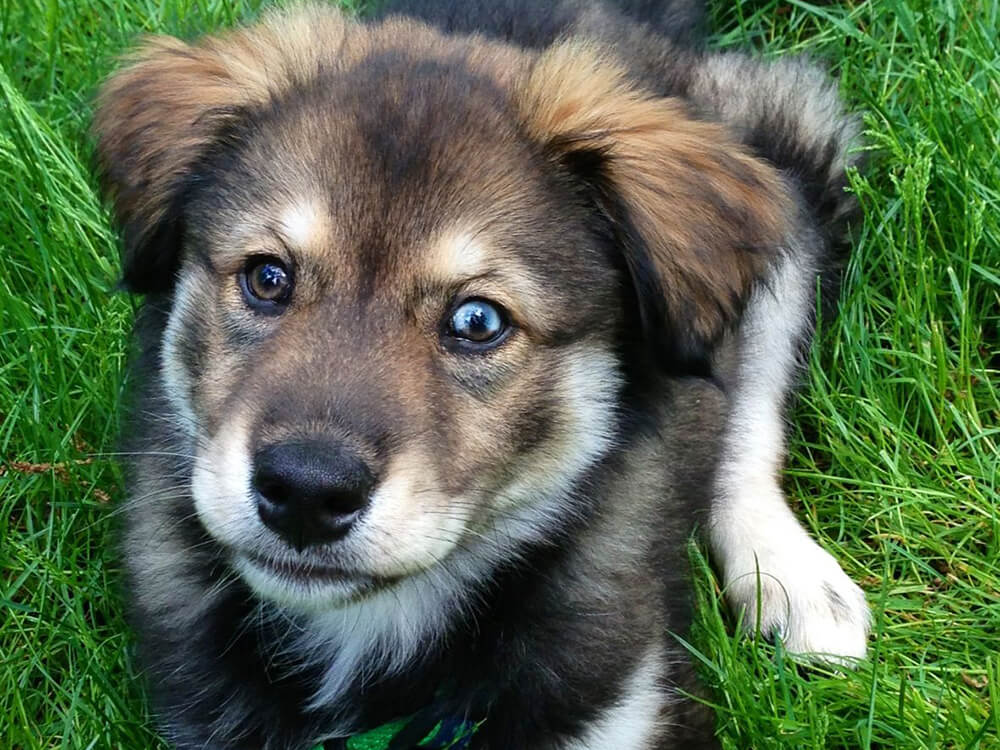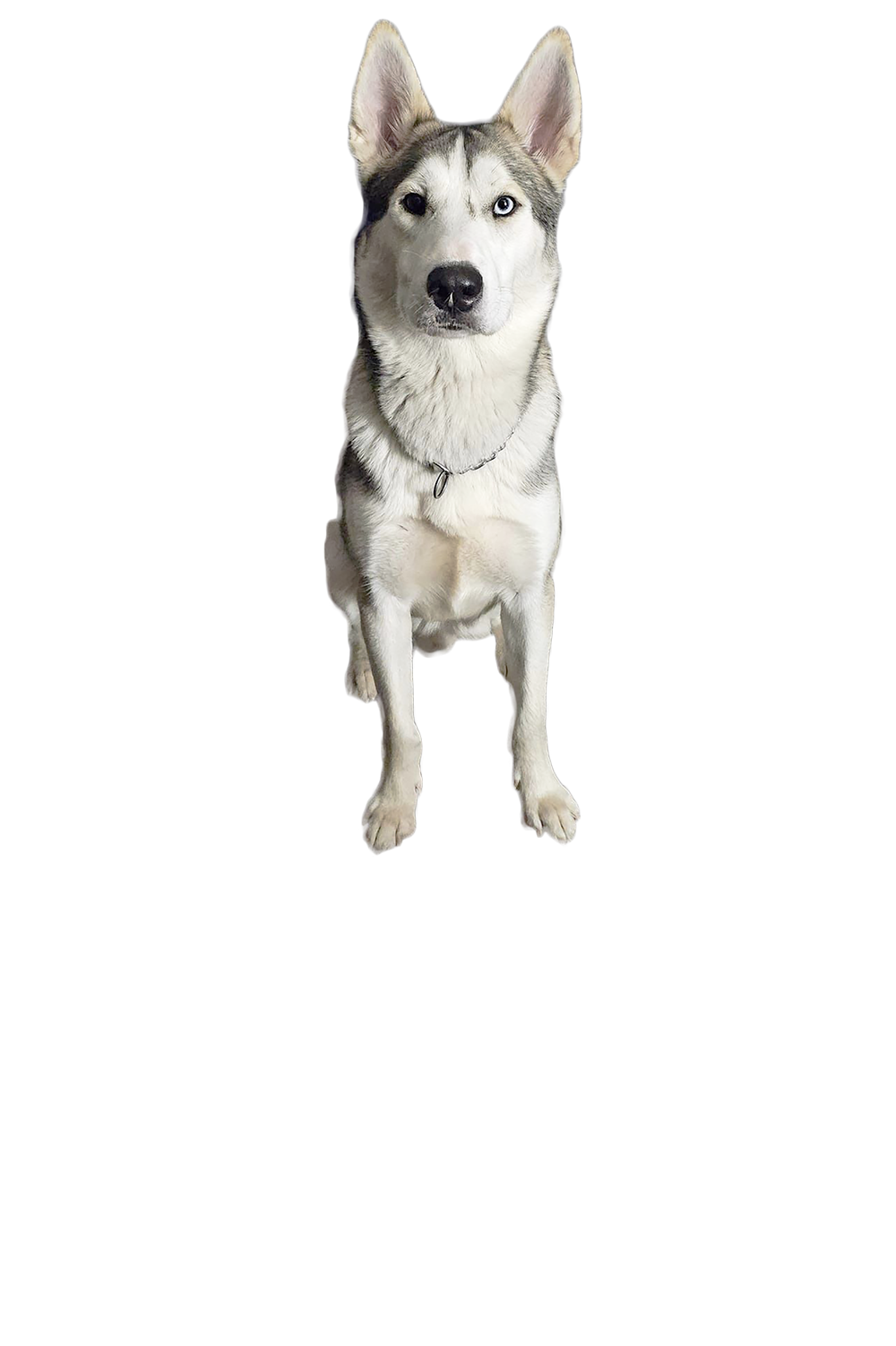Not the breed you're looking for?
Click Here
Featured Story

The Goberian is a delightful mix of two well-loved and prominent purebred dogs, the Golden Retriever and the Siberian Husky. Combining both breeds … [Read More...]
The Alaskan Husky is a hardworking mixed-breed sled dog originating from North America. Several purebred canines contributed to the development of this dog type, including the Alaskan Malamute and the Siberian Husky.
Despite spending most of his life as a working dog, the Alaskan Husky can be a friendly and loving canine companion if provided with proper care, socialisation, and training. Owning this dog entails frequent brushing sessions to tame the shedding and providing copious amounts of exercise to expend his high energy levels.
The Alaskan Husky first originated in the Northern American regions, but his exact date of existence remains unknown. Siberian migrants were believed to have introduced these dogs to the continent.
Alaskan Huskies were developed to be very resilient sled dogs with amazing endurance and stamina. They serve as a crucial mode of transport for Northern American settlers during extreme winter conditions.
Some of these dogs are highly capable of travelling long distances despite rough weather. There are also Alaskan Huskies made for short but speedy expeditions whilst others specialise in pulling heavy sleds.
In modern times, the Alaskan Husky remains an irreplaceable working dog used for transporting people and goods. He is often seen participating in sled racing competitions as well.
The Alaskan Husky is strictly bred for purpose, not physical conformation. As crossbreeding was used to develop him, he is not recognised by major kennel clubs, including the Kennel Club in the UK. Due to his lack of pedigree, he is viewed as a type of dog rather than a breed.
Since Alaskan Huskies are not constrained by breed standards, they come in varied bloodlines.
Therefore, it is no surprise that he is genetically closely related to other sled dogs like the Siberian Husky and the Alaskan Malamute. Interestingly, his lineage is more heavily composed of other dog breeds such as the:
Whilst major kennel clubs do not acknowledge the Alaskan Husky as a purebred dog, he can be registered as a working dog in some organisations like the American Kennel Club.
Because of their diverse parentage, many Alaskan Huskies have a Husky-like appearance but a slender physique compared to other Arctic dogs.
Thus, they are easily mistaken for other Nordic dog breeds like Siberian Huskies and Alaskan Malamutes.
Most Alaskan Huskies are medium-size dogs with slim bodies. But those that are specifically made for towing heavy cargo have a more stocky and sturdy build.
Males stand around 25 inches (64 centimetres) at the withers and weigh between 40 and 60 pounds (18 to 27 kilos).
Females are smaller and lighter comparable to the male ones. They measure about 23 inches (59 centimetres) at the withers and weigh approximately 35 to 48 pounds (16 to 22 kilos).
The Alaskan Husky has a wedge-shaped head connected to a long muscular neck. His head is adorned with pointed ears and an elongated muzzle.
The eyes of Alaskan Huskies are often dark brown as opposed to the lighter eye colours of other Arctic dogs. They have curled tails, muscular limbs, and webbed feet, which allow them to traverse snow more safely.
Alaskan Huskies have short- to medium-length soft double coats. Their classic fur colouration is the black and white combination. However, they can come in other coat colours and patterns too.
Although the Alaskan Husky has a double coat, it is less dense compared to the thick fur of other sled dogs. Brushing it twice or thrice a week will suffice unless shedding season begins.
During this time, it is advised to comb the Alaskan Husky’s coat daily to get rid of all loose hairs and prevent unwanted mats and tangles.
Never shave the Alaskan Husky’s coat since doing so hinders his body from properly regulating itself, putting him at risk of hypothermia or hyperthermia. It also makes him more vulnerable to painful sunburns.
Sparingly bathing the Alaskan Husky is advised to avoid washing off the natural oils of his skin and coat, which provides a moisturising effect. Once a month of washing is a good schedule to follow, except when his fur is heavily coated with dirt and emits a pungent smell.
Regular nail trimming should be done once a month, and the same applies to ear cleaning. Daily toothbrushing is encouraged as dental disorders are pervasive health problems in dogs including Alaskan Huskies.
Most Alaskan Huskies are used to living their lives solely as sled racing dogs. Living a domestic life as house pets is a new experience for many of them, which may take plenty of adjustment.
Early training and socialisation will hasten the process of Alaskan Huskies breaking out of their shell. These dogs might be reservedly affectionate at times, but they are devoted and loving canine companions at heart.
Being raised as a pack animal, the Alaskan Husky needs constant companionship. Isolated living is not the best home life for him. Otherwise, they will quickly develop behavioural problems such as separation anxiety.
Alaskan Huskies are very sociable and they love to chat. They vocalise more frequently than other dogs, so if you want a quiet pet, then these dogs are not the right match for you.
Because of his large size and high prey drive, the Alaskan Husky is not a great companion for small animals. But he can get along well with dogs as big as him.
His friendliness and high energy make him bond well with children. Just make it a habit to keep an eye on him, especially when around smaller children, to avoid accidents.
Alaskan Huskies have gone through generations of working as diligent sled dogs. They are innately intelligent and can easily pick up commands.
On the downside, there are times when their stubbornness will rear its head and they will refuse to follow your guidance. Remember to stay calm and be patient.
Do not break the Alaskan Husky’s trust by doling out traumatic punishments. Positive reinforcement paired with consistency is the key to acquiring his cooperation and increasing his motivation.
A highly active dog, the Alaskan Husky will need high-quality food containing at least 30% of protein and 20% of fat. Both of these are essential in providing his body with fuel and energy to stay spry and nimble throughout the day.
The proteins and fats in the Alaskan Husky’s diet must come from top-grade animal sources like turkey, beef, lamb, salmon, or chicken. The ingredient list must explicitly state the name of the animal source, not vague terms like poultry, meat meal, or fish derivatives.
Alaskan Huskies that participate in dog sledding use up to 10,000 calories per day. However, those kept as house pets will require significantly less calorie intake, ranging between 800 and 1,200 calories daily.
The Alaskan Husky has a life expectancy of 10 to 15 years. Their mixed-breed ancestry allows for better genetic diversity, which reduces their susceptibility to hereditary illnesses.
However, it does not completely erase the dangers of developing breed-specific health issues such as:
Progressive Retinal Atrophy (PRA)
PRA is an eye disease that gradually robs affected Alaskan Huskies of their vision permanently. Not only is this ailment irreversible but also incurable. Creating a safe and comfortable living environment for these dogs is a priority.
Dog owners need to be more attuned to their blind dog’s needs such as:
These lifestyle changes may take a long time to get used to, but it is a necessity to keep an Alaskan Husky with PRA away from accidents.
Laryngeal Dysplasia
This illness is observed to be one of the most common health conditions in the Alaskan Husky. It refers to the gradual deterioration of the nerves that control the laryngeal muscles, leading to the windpipe’s paralysis.
Laryngeal dysplasia causes coughing, exercise intolerance, wheezing, and breathing difficulties in affected dogs. The only way to reverse this health problem is through surgery. Weight management, exercise restriction, and reduced exposure to hot weather are recommended for Alaskan Huskies post-operation.
Alaskan Husky Encephalopathy (AHE)
AHE is a life-threatening hereditary neurological disorder that affects the body coordination of the Alaskan Husky. It causes difficulties in walking, chewing, and swallowing. Other debilitating symptoms of this disease are seizures and loss of vision.
Some Alaskan Huskies with AHE show an inability to properly produce a protein responsible for transporting thiamine or vitamin B1. Whilst there is no cure for this neural problem yet, thiamine supplementation for canines with thiamine deficiency can slow down its progression.
Genetic diseases can be curbed through careful selective breeding. Prospect dogs to be used for producing Alaskan Husky puppies must undergo health screening. Canines with a high propensity to pass on heritable diseases should never be used for breeding.
Working dogs like the Alaskan Husky are full of energy. Keeping them indoors without physical exercise and mental stimulation pushes them to develop behavioural issues such as relentless digging and barking.
Expend an Alaskan Husky’s energy by providing him with 2 hours of rigorous exercise. He is a great fit for people who love taking outdoor trips like hiking, mountaineering, or backpacking.
Let him carry his share of essentials in a doggy backpack to add more challenge. Just make sure that the pack does not go over 10% to 12% of his body weight.
The Alaskan Husky has natural expertise in dog sports such as dog sledding and skijoring. But he can also excel in other competitions, including obedience, herding, rally, and agility.
With the Alaskan Husky’s lineage as an Arctic dog, living in hot climates is not safe for him. Do not take him out for walks if the temperature in your area goes above 80 degrees Fahrenheit.
The Alaskan Husky is a mix of multiple purebred dogs such as the Alaskan Malamute, Canadian Eskimo Dog, Siberian Husky, and Greyhound.
Although his lineage is made up of pedigree, he is not recognised by major kennel clubs due to being a mixed-breed canine.
Some Alaskan Huskies will have blue eyes like their Siberian Husky parents, but most of them will sport brown eyes. In rare cases, an Alaskan puppy is born with heterochromia, wherein one of his eyes is blue and the other brown.
A working dog like the Alaskan Husky has a high prey drive, so he might be aggressive toward smaller animals. So housing him with cats, rabbits, and other smaller creatures is not advisable.
Spending time with fellow canines, on the other hand, brings big joy to the Alaskan Husky. Working as a sled dog involves carrying out various transporting jobs along with other pooches. He will easily get along well with a well-behaved dog through proper socialisation and introduction.
The Alaskan Husky is a good family dog for people with an active lifestyle. He needs pawrents that can match his energy level and provide him with a satisfying daily workout.
We do not recommend acquiring an Alaskan Husky dog if you cannot meet his regular exercise needs. Spending time indoors for long periods with physical and mental stimulation will lead him to develop behavioural problems.

Are you sure the Alaskan Husky is the best breed for you? Take the Pet Breed Selector Quiz to find your perfect breed match.
Dog Breed Selector Quiz